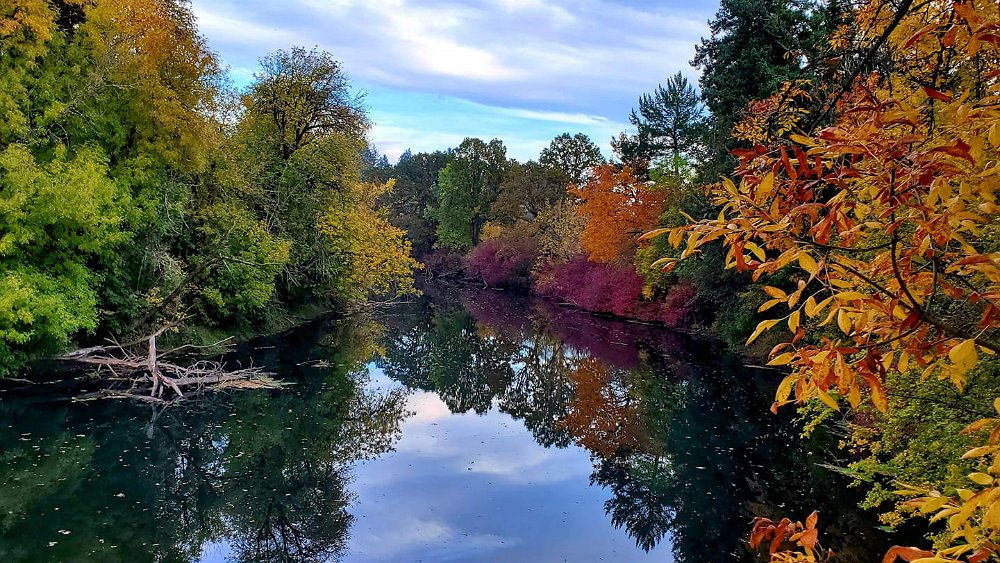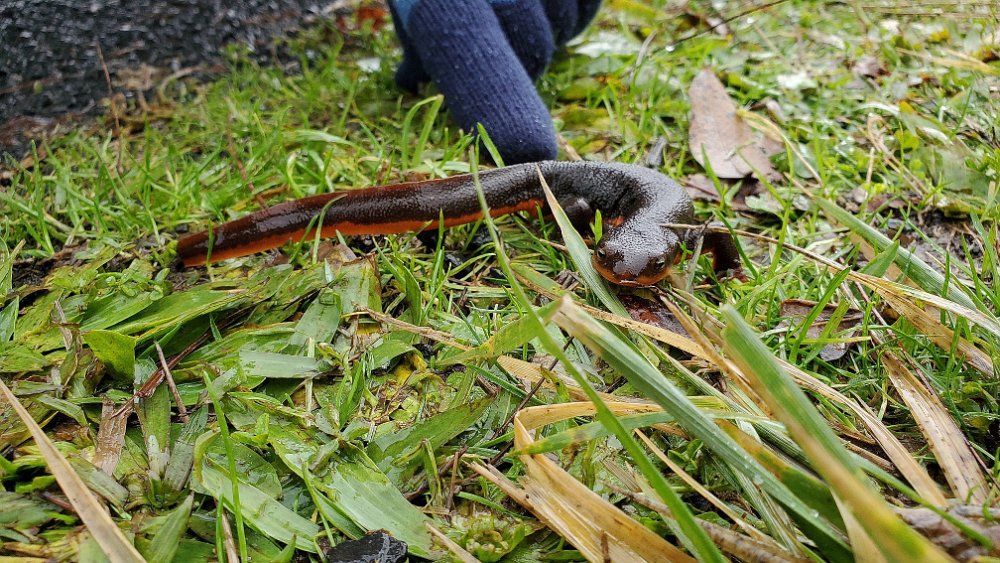
Tualatin River From River Overlook
6/6/2020: This is a great hike for the family, to include little ones. Many ducks, geese, eagles, hawks, and other critters. If you are looking for a place to start your little one's hiking career, this could be the place. Per US Fish & Wildlife Service: Just a few short miles from the center of Oregon’s largest city, the honking of geese replaces the honking of cars. This special place is a refuge, a haven for wildlife and people. You can hike through wetlands, forests, riparian regions, along the Tualatin River. You really can’t go wrong taking one or more of these hikes. Note that from October 1 until May 1, the trail is seasonal, and you can only do an out and back of about two miles. Still, even then, there is plenty to see.
Key: Kid Friendly | Forest | Wildlife | Wildflowers | Visitor Center | Community Programs | Oregon | US Fish and Wildlife Service | National Wildlife Refuge System
More Notes: The Tualatin River National Wildlife Refuge is part of the U.S. Fish Wildlife Service National Wildlife Refuge System. It not only has a beautiful series of trails but a visitor’s center with a beautiful, child-friendly, refuge exhibit. You can sign your little ones up for future naturalist-led learning, borrow a small backpack from the visitor center with materials to help you learn about the refuge while on your hike, have a picnic at the trailhead at one of the many sheltered picnic tables and, well, just have a great time. There is a photo blind that you can reserve that provides wonderful opportunities for the serious (or even less serious) photographer, or just a place to enjoy the quiet, all by yourself.
Hundreds of species of animals make the refuge home. The refuge is a seasonal home for many ducks, geese and other migratory birds. Eagles, hawks, falcons and owls all make the refuge their home. You can see eagles' nests and, if lucky, even young eagles. Deer, otter, beavers, racoons, weasels, coyotes, foxes, bobcats, too many to name them all, also live on the refuge. Amphibians such as the rough-skinned newt, long-toed salamanders, Pacific Tree Frogs, red-legged frogs, bull frogs and toads can be found if you keep a sharp eye out. A multitude of woodpeckers, songbirds, hummingbirds and shorebirds are common.
Plants range from small wildflower-bearing species to shrubs such as Oregon Grape (the Oregon State Flower) and red currant to oak, cedar, ash, cottonwood, Douglas Fir (the Oregon State Tree), Pacific Yew and other trees, some upwards of 300 years old.

Rough-skinned Newt
Hiking is generally very easy, with clearly marked trails throughout the refuge. From May to October, the entire series of trails is open and provides upwards of four miles of hiking, depending on the route you choose. During the winter months, the loop trails are closed to protect migrating birds that make the refuge their winter home. During the winter months, there is a one-mile out and back trail that takes you through every habitat of the refuge: a young oak savanna, grassland, wetland, riparian forest, creeks, and river overlooks. Some days you may see and hear hundreds and thousands of geese, ducks and other migratory waterfowl. You might see deer, coyotes, frogs, songbirds, salamanders, newts, rabbits, beaver, otter and more. Other days you may see only trees, shrubs, flowers, the Tualatin River and Chicken and Rock Creeks, and hear a breeze pushing through the forest. Regardless of what you see or hear, the experience will likely be different every time you visit.
During your hike, you might run across a roving naturalist. These folks wear blue vests with the US Fish and Wildlife emblem on it. Feel free to ask them anything about the refuge. If they don't have the answer, they can usually point you in the right direction. They can also tell you about points of interest that might be hidden just around the corner or across the river.
Rod's recommendation: I have been to this refuge a lot. You might even see me with a blue vest on from time to time. My favorite time of year to visit the refuge is fall, winter, spring and summer - yes, all year. Each season has a wealth of life to see: budding trees, wildflowers and new fawns in the spring, goslings and ducklings follow their parents in the seasonal pond in summer, fall brings migrations of waterfowl, and winter brings heavy rains that make the ever-changing environment a rich place to visit any time of year. Early morning hikes might surprise you with a beaver crossing the trail (don't confuse beaver with nutria). Note that I am not officially affiliated with, nor do I represent this refuge. I simply volunteer to help out from time to time because I love it so much.
